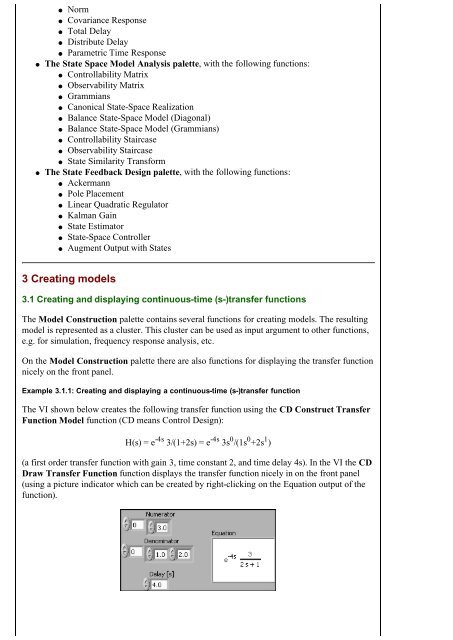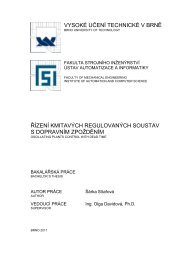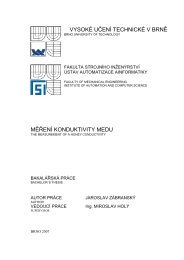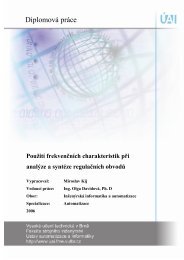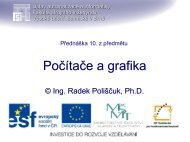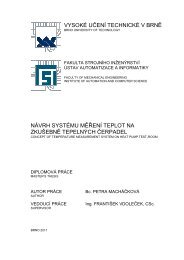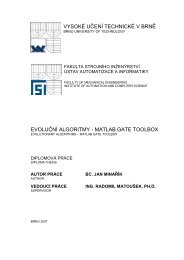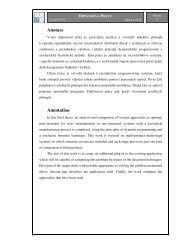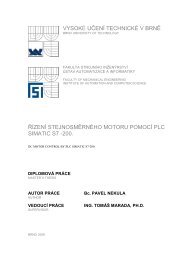Introduction to LabVIEW Control Design Toolkit by Finn Haugen ...
Introduction to LabVIEW Control Design Toolkit by Finn Haugen ...
Introduction to LabVIEW Control Design Toolkit by Finn Haugen ...
You also want an ePaper? Increase the reach of your titles
YUMPU automatically turns print PDFs into web optimized ePapers that Google loves.
Norm<br />
Covariance Response<br />
Total Delay<br />
Distribute Delay<br />
Parametric Time Response<br />
The State Space Model Analysis palette, with the following functions:<br />
<strong>Control</strong>lability Matrix<br />
Observability Matrix<br />
Grammians<br />
Canonical State-Space Realization<br />
Balance State-Space Model (Diagonal)<br />
Balance State-Space Model (Grammians)<br />
<strong>Control</strong>lability Staircase<br />
Observability Staircase<br />
State Similarity Transform<br />
The State Feedback <strong>Design</strong> palette, with the following functions:<br />
Ackermann<br />
Pole Placement<br />
Linear Quadratic Regula<strong>to</strong>r<br />
Kalman Gain<br />
State Estima<strong>to</strong>r<br />
State-Space <strong>Control</strong>ler<br />
Augment Output with States<br />
3 Creating models<br />
3.1 Creating and displaying continuous-time (s-)transfer functions<br />
The Model Construction palette contains several functions for creating models. The resulting<br />
model is represented as a cluster. This cluster can be used as input argument <strong>to</strong> other functions,<br />
e.g. for simulation, frequency response analysis, etc.<br />
On the Model Construction palette there are also functions for displaying the transfer function<br />
nicely on the front panel.<br />
Example 3.1.1: Creating and displaying a continuous-time (s-)transfer function<br />
The VI shown below creates the following transfer function using the CD Construct Transfer<br />
Function Model function (CD means <strong>Control</strong> <strong>Design</strong>):<br />
H(s) = e -4s 3/(1+2s) = e -4s 3s 0 /(1s 0 +2s 1 )<br />
(a first order transfer function with gain 3, time constant 2, and time delay 4s). In the VI the CD<br />
Draw Transfer Function function displays the transfer function nicely in on the front panel<br />
(using a picture indica<strong>to</strong>r which can be created <strong>by</strong> right-clicking on the Equation output of the<br />
function).


